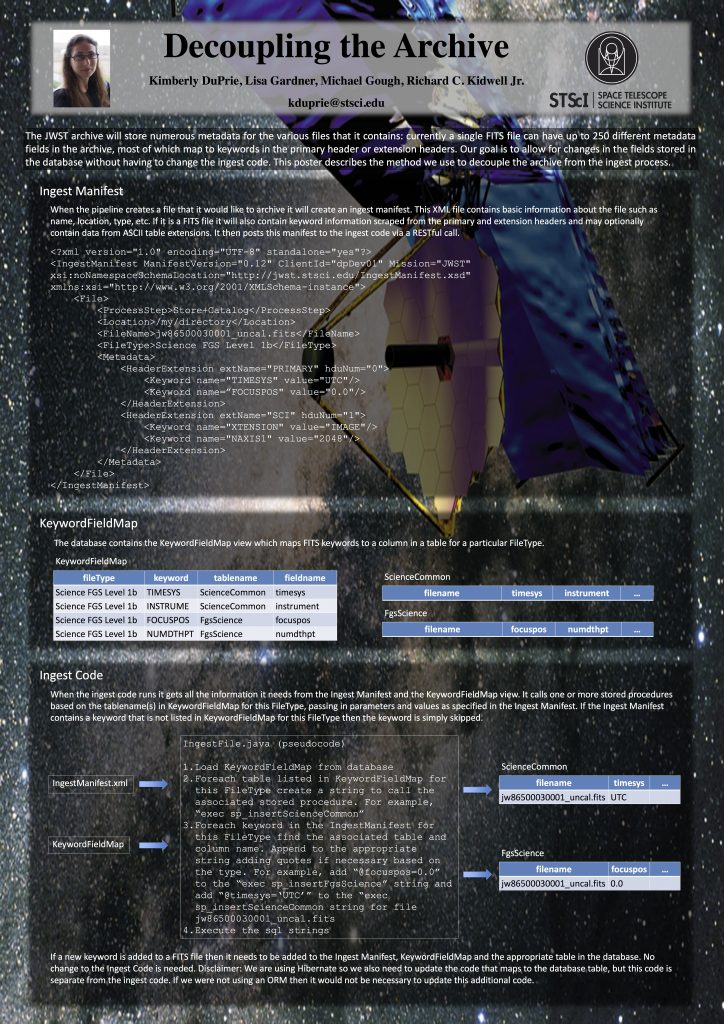 The James Webb Space Telescope (JWST) archive will store numerous metadata for the various files that it contains: at the time of this writing a single FITS file can have up to 250 different metadata fields in the archive, most of which map to keywords in the primary header or header extensions. One of the goals of the archive design is to allow for changes to the fields stored in the database without having to change the ingest code. We have found this to be very helpful during the code development phase of the mission when the FITS file definitions are frequently changing. We also anticipate it will be advantageous during the lifetime of the mission as changes to processing will likely result in changes to the keywords but should not require changes to the ingest code. This poster describes the methods we use to decouple the archive from the ingest process.
The James Webb Space Telescope (JWST) archive will store numerous metadata for the various files that it contains: at the time of this writing a single FITS file can have up to 250 different metadata fields in the archive, most of which map to keywords in the primary header or header extensions. One of the goals of the archive design is to allow for changes to the fields stored in the database without having to change the ingest code. We have found this to be very helpful during the code development phase of the mission when the FITS file definitions are frequently changing. We also anticipate it will be advantageous during the lifetime of the mission as changes to processing will likely result in changes to the keywords but should not require changes to the ingest code. This poster describes the methods we use to decouple the archive from the ingest process.
Kimberly DuPrie, Space Telescope Science Institute
Lisa Gardner, Space Telescope Science Institute
Michael Gough, Space Telescope Science Institute
Richard C. Kidwell Jr., Space Telescope Science Institute

